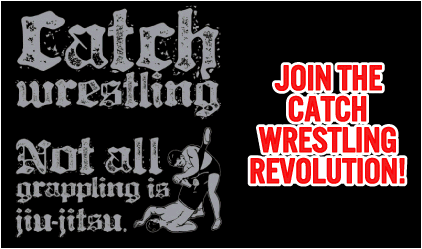11/29/12:
Develop conditioning drills specific to wrestling:
The purpose of conditioning skills is to supplement (not replace) wrestling. All conditioning drills should be developed with the objective of having maximum carryover to the sport itself. This is called specificity of exercise. Your goal is to make each conditioning drill as specific to wrestling as possible.
Fortunately, this is not difficult because wrestling requires so many different levels of fitness: strength, quickness, agility, endurance, flexibility, balance, and mental toughness. Wrestling is considered by many to be the most strenuous and physically demanding sport of all. So, just about any conditioning drill will have benefits for the wrestlers.
The use of conditioning drills for wrestling can accomplish the following objectives:
1.) Improved strength. Conditioning is used to increase strength in the off-season and maintain strength during the season.
2.) Increased agility and quickness. Developing these skills helps the wrestler to control his body in different positions and to be quicker on his feet and on the mat.
3.) Enhanced endurance. Wrestlers with developed cardiovascular endurance are able to finish strong in matches, recover more quickly, and handle the rigors of a strenuous season.
4.) Training variety. Conditioning drills are just different enough from technique drills to alleviate tedium and keep wrestlers interested in practice.
5.) Mental benefits. Good conditioning promotes mental toughness and improves confidence.
Strength Drills:
The four major benefits of an effective strength program for wrestling are as follows:
1.) A strength program should make wrestlers better, so it’s best to concentrate on exercises that use the wrestling muscles.
2.) A stronger athlete is less prone to injury and will recover from injury more quickly.
3.) A stronger, well-conditioned athlete can hold up to the rigors of a tough season.
4.) A stronger wrestler is a more confident wrestler. He feels more able to compete and doesn’t feel the misguided need to cut an inordinate amount of weight.
The first and most important goal of strength development for wrestling is core strength. The core refers to the stabilizing muscles in the center of the body, which include the hips, torso, and lower back. If you think of the body as a series of electrical pathways, you must have a good electrical conductor to carry the current. Think of your midsection as a sponge. Without a conductor (“water”), the electrical current will not travel. The water represents a well-developed core. The stronger the core, the more efficiently energy can be transferred without being lost in the sponge.
Second, wrestling necessitates a lot of driving with the legs and pulling with the arms, so strength conditioning should address those actions.
Third, wrestling is one of the few sports where neck strength is very, very important.
Fourth, wrestlers need endurance strength to remain strong throughout the entire match, especially if a tie occurs and further wrestling is required.
Finally, lifting should integrate different muscle groups at the same time. Wrestling takes place on a three-dimensional plane: up and down, left and right, forward and backward. So strength training should involve movement in all directions.
In the exercises that follow, you will see many balancing exercises as well as lifting that involves movement from one plane to another. These exercises are designed to bring many different muscles into play at the same time. This not only promotes strength in isolated muscles but also increases in balance, flexibility, speed, and agility.
We want to create more powerful wrestlers. By definition, power is the product of force and speed. Power is definitely one thing we hope to gain in a good strength and conditioning program.
It is generally believed that strength gains are better accomplished through heavier weight and fewer reps (several sets of 4 to 8 reps), whereas muscular endurance is achieved with a combination of lower weight and higher reps (sets of 10 to 15 reps or more). I am not a big fan of high-weight, low-rep lifting unless athletes are properly taught, supervised, and spotted. With heavy lifting, the potential for serious injury increases, as does the tendency for athletes to “cheat” or use improper form. The last thing any wrestling coach wants is for one of his wrestlers to be injured in the weight room, especially during the season. In-season lifting should focus on endurance lifting, except for a select few wrestlers who are trying to gain weight.
In-Season Lifting Program:
There is a place for lifting during the wrestling season. However, one should not lift just for the sake of lifting. Lifting activities must be organized in such a manner that the muscle groups worked are those used in wrestling. If not, the lifting program will be ineffective.
Big 10:
The Big 10 is a group of buddy-lifting exercises we do once a week during the season at the conclusion of practice. These exercises help with strength and endurance and enhance all the major muscle groups used in wrestling.
Keep these guidelines in mind when doing these lifting exercises:
Each wrestler needs a buddy who is about the same weight. Heavyweights may need to lift a lighter person (coach or extra person).
Do one lift at a time with each partner, alternating and keeping the team together.
As the wrestlers get in better shape during the season, gradually increase the reps and distances involved.
The Big 10 approach is a very effective use of practice time. Following is a list of the 10 exercises that make up the Big 10:
1. Piggyback Carry. One partner carries the other piggyback style around the mat once or twice. Switch partners for each carry. This activity develops leg, arm, and back strength.
2. Belly-to-Back Carry. With the belly-to-back carry, the partners go only about one-half the distance as the piggyback carry. This exercise assists the participants in proper lifting techniques and strengthens the back muscles.
3. Buddy-on-Back Squats. One partner is in the piggyback position as the drill partner squats for 10 to 15 reps while facing close to the wall. Emphasize deep squats. This conditioning drill strengthens the legs.
4. Reverse Body Lifts. The drill partner in the standing position initiates the drill by facing opposite his partner with arms around the back of the body and hands locked in front. At this point, the drill partner would lift his partner off his feet from side to side. The reverse body lifts would conclude after 8 to 10 lifts for each drill partner. This drill develops arm, chest, and back strength and proper lifting skills.
5. Handstand Push-Ups. The drill partner does push-ups while his partner holds his feet in the air, standing behind. Each partner should perform 8 to 10 reps. This conditioning activity develops arm and chest strength in various body positions.
6. Pull-Ups. The drill partner is lying on his back with his partner standing and straddling him while each partner grasps the other’s wrists. The drill partner then pulls himself up. Each practice partner executes 15 to 20 reps. This drill increases grip strength as well as arm and pectoral strength.
7. Head-Between-Legs Lift. The drill partner is on all fours with his head between his partner’s legs. His partner is lying over the drill partner’s back. The drill partner then lifts his partner off the mat. Each partner performs 6 to 10 reps. This drill strengthens the back muscles for lifting.
8. Four-Way Neck Exercises. The drill partner is on all fours with his partner behind him. The partner then forces the drill partner’s neck in different directions: down, up, and from side to side. The drill partner should give moderate neck resistance. Both partners perform six to eight reps in each direction.
9. Abdominal Drill. The standing partner throws the drilling partner’s legs toward the mat, straight down to the left and right. Each wrestler should do 20 to 30 reps. This activity develops the abdominal muscles as the drilling partner brings his legs back up.
10. Fingertip Push-Ups. Have your athletes do 40 to 80 reps of push-ups on their fingertips. Push-ups develop the arm and chest muscles.
By Coach Bane
Sources:
2.) “The Wrestling Drill Book” by Bill Welker












